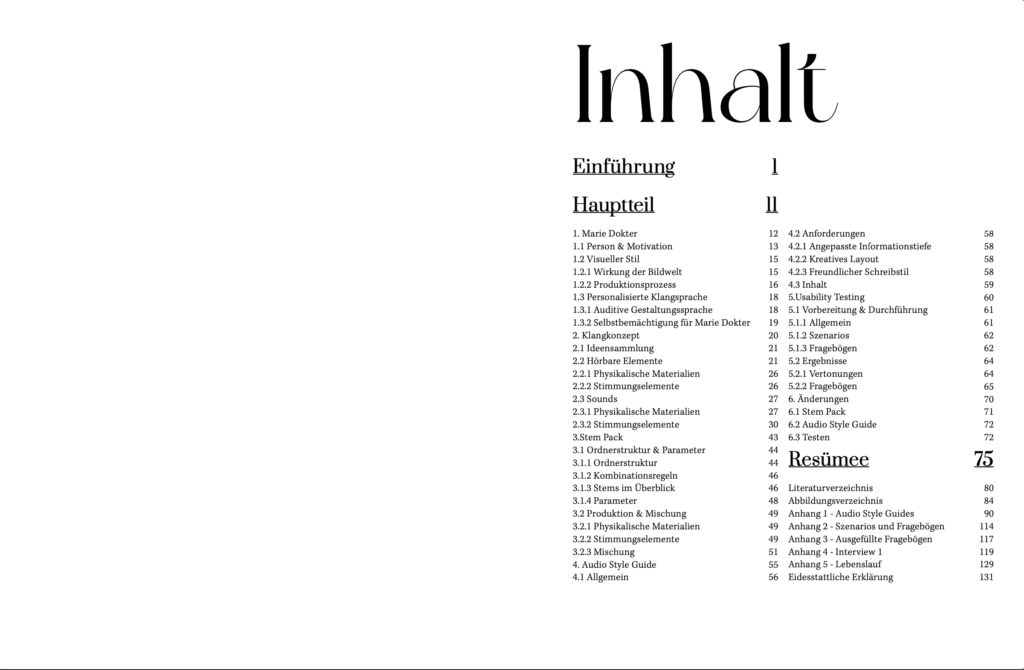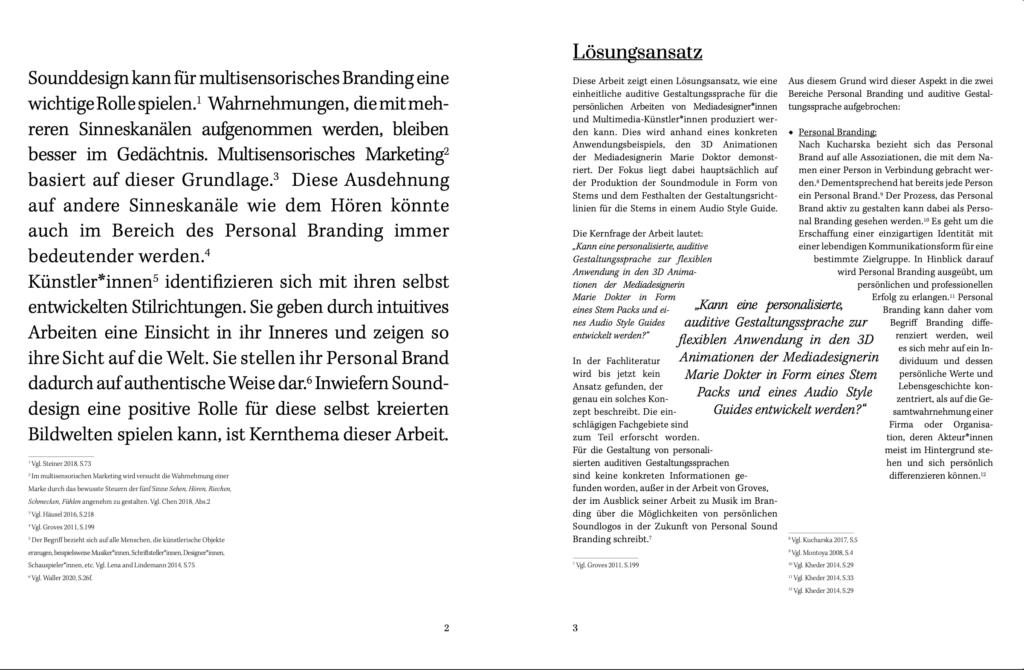Authored by Elisabeth Hacker, Mentored by Astrid Drechsler
This evaluation was a part of Ursula Laggers course Proseminar Master’s Thesis. I have used it as an Impuls blog post because of a critical insight it has provided to my research. The point being that the written master’s thesis is not a plain boring word document, but more of a stylised or self branded book which showcases the research behind your final creation. It should truly be a self reflection of yourself from head to toe.
A.
1. Problem/Question: This study delves into the challenge of merging unique 3D animations with a personalized sound style for Marie Dokter’s brand. Its goal is to develop an accessible sound design that seamlessly integrates with her animations.
2. State of Research: There’s a noticeable gap in research exploring the fusion of sound elements with 3D animations for personal branding. This indicates a need for a tailored sound approach.
3. Objective: The thesis aims to create a sound strategy that enhances Marie Dokter’s brand by providing consistent and adaptable audio for her 3D animations. While promising, improvements are needed, especially in usability, completeness of the audio style guide, and flexibility of the stem pack, currently in prototype status.
4. Theory Reference: This thesis focuses on establishing an original sound framework for media designers and artists, illustrated through Marie Dokter’s 3D animations. Despite a lack of prior literature, it refers to Groves (2011) as a related source, particularly concerning personal sound branding.
5. Method: The thesis methodology involves crafting sound components (Stems) and an Audio Style Guide but lacks specific details on data collection and analysis methods.
6. Material: The thesis draws from the works of media designers and artists, primarily Marie Dokter’s animations. The incorporation of references from existing literature adds depth to the research.
7. Literature: The literature covers various topics such as music theory, sound design, personal branding, usability testing, and electronic music production. While promising, a clearer connection of each source to the thesis would enhance focus.
8. Structure: The thesis is well-organized and visually appealing, adhering to academic standards for clear idea presentation.
9. Result: Test outcomes demonstrate the effectiveness of the approach, yet refinements are essential for practical use. The Audio Style Guide lacks depth, and the Stem Pack requires sound quality and flexibility improvements, currently in a prototype phase necessitating further development.
B.
Why I Chose This Work: Its professional appearance and relevance to sound and design piqued my interest. The coherent writing and visual aids made it engaging.



C.
1. Originality of the Work: This study creatively blends personal branding, sound design, and 3D animation. By integrating Marie Dokter’s works with innovative sound concepts, it explores new avenues.
2. Result of the Work: Test outcomes highlight strengths and areas for development. While the core idea holds promise, both the Sound Guide and sounds need refinement, showing the thesis’s self-awareness.
3. Presentation and External Form: Its professional appearance and readability make it appealing. The integration of visuals maintains engagement and structure.
4. Difficulty of the Task: Incorporating sound into 3D animations for personal branding requires expertise in sound, animation, and branding. The writer navigates these complexities systematically.
In summary, this work shows promise and acknowledges areas for improvement. Successfully managing such complexity demonstrates the writer’s ability to handle diverse challenges effectively.